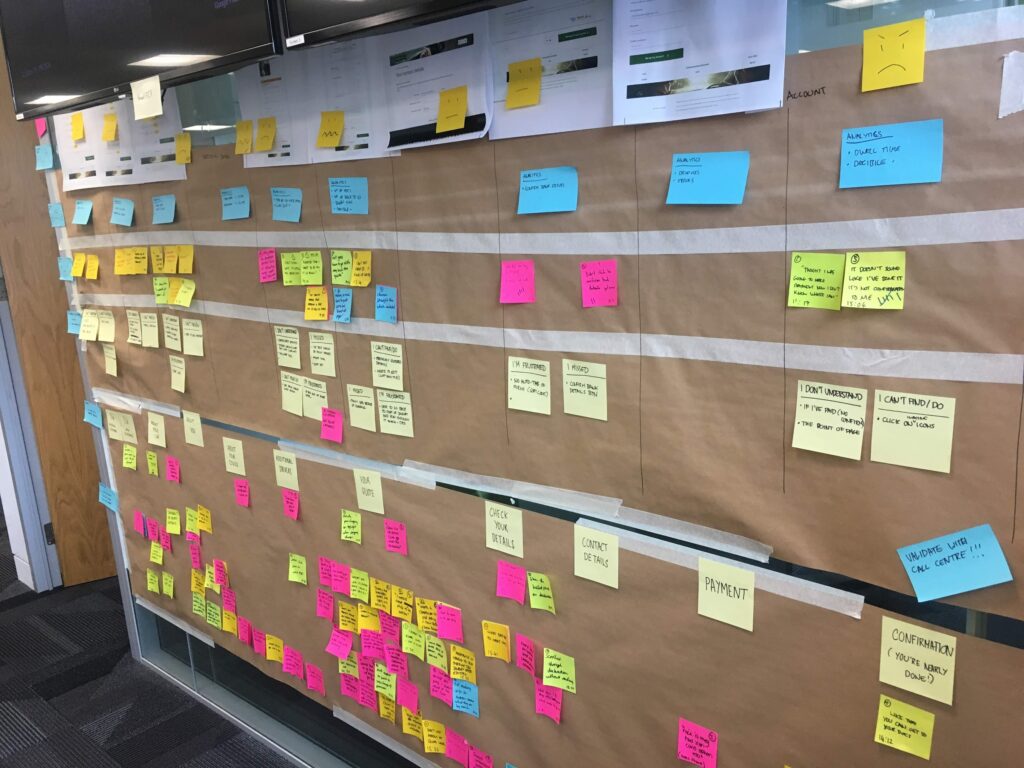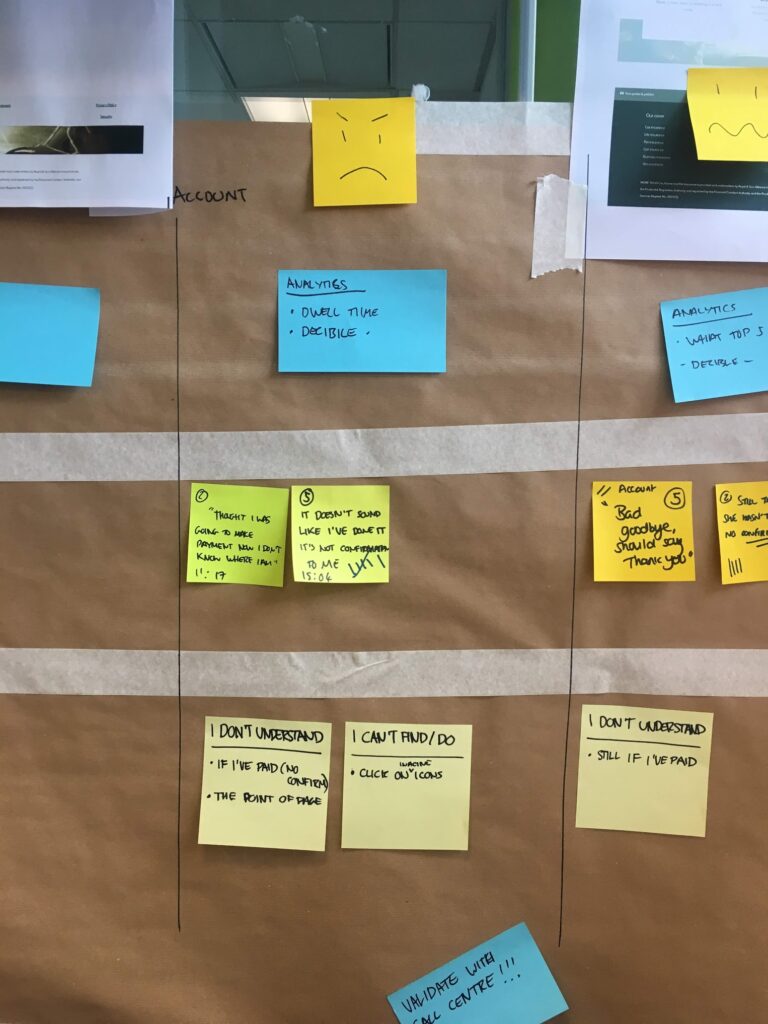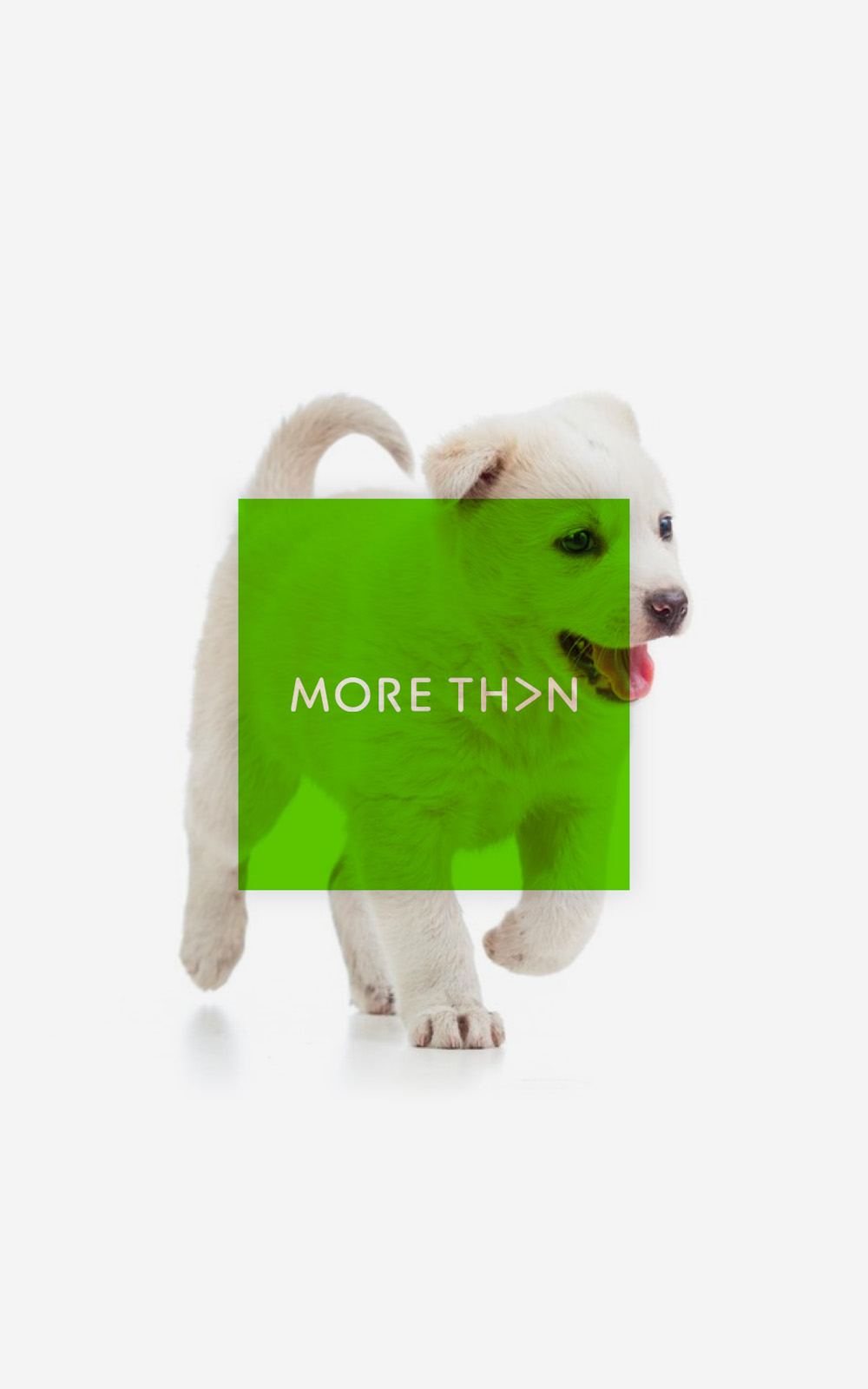Bridging the gap between research and design: Introducing a new working process; a modified user journey map to record research data, make it visible to the wider business and drive design decisions.
A brief background
Morethan is a British based insurance brand owned by one of the first ever insurance companies in the world, Royal Sun Alliance (RSA). RSA is a worldwide organisation found firmly in the top half of the Fortune 500. It operates in many countries and underwrites insurance for many household brands.
The new shiny word/strategy today is “digital transformation”. Old organisations are pilling huge sums of money into this trend, desperately trying to catchup with the new kids on the block.
RSA is implementing such a strategy and the past few years, the Digital Team has overhauled the way they work. Introducing agile ways of working. Bringing research to the forefront and focusing on user centred design.
The problem
A team re-structure happened just before I arrived. Where once there was one team per product, the model and all its processes changed and shared across many.
This re-structure led to a lack of process and confusion to how we worked. With product owners now fighting for resource, we were no longer working holistically. Rather blindly reacting to demands with little to no thought on how our work related to other’s.
We became siloed. Which is ironic as the point of the restructure was to prevent this. However when your head is down fighting little fires seldom do you see the bigger picture.
We were asked to do a “review” of a Morethan product. We had a good dashboard with healthy analytics and a budget for user testing. With many of the old established processes gone and a team somewhat in disarray this was an opportunity to re-establish a process.
A new, more visible process
My wife Anna (a user researcher) and I are working on a process that bridges the gap between research and design. Our idea uses a modified user journey map to record research data, identify key problems and generate design tasks. This process does not wait for a report or presentation, but uses data to directly fuel design decisions. It keeps the momentum going by taking the insights from each step and applying them to the next.
Using this process, we found some wall space and filled the board with the following information:
A high level sentiment wave shows the pain-points of a journey. Quantitate data showing the numbers – where the big problems lay Qualitative data showing the why – real people interacting with the product, with relatable quotes. Key problems identified, not as “finger in the air ideas” but drawn directly from the data above. Hypothesis brought our multi-disciplinary team together to figure out the rout cause. Generated solutions and tasks now have all of the above to justify their existence.
Prioritise
Once the team ran through the board and generated tasks, we began to prioritise. There are many prioritisation models out there, I tend to lean towards impact v effort as it not only prioritises work but classifies them too. Once done, our team had a backlog of work that’s directly linked to research data.
Benefits
As this board was on a wall for all to see, it offered many benefits:
- It became the focal point to discuss all thing about the product.
- People referred back to and remembered certain aspects of the research.
- It allowed other products and teams to view the research and tasks and see obvious cross overs.
- It allowed stakeholders from any level to understand
- What key problems we’re trying to solve
- What our priorities are
- Why the priorities are in that order
- The research data to back up any task
- How it will be measured and the impact it will have
More to the point this method, brought all the team together on a common goal. No longer were disciplines handing off work to each other, but rather intermingling and working at the same time. This also reduced the time it took to insight or task. Using this method brings the entire multi-discplined team together to solve problems.Our new method proved so successful to generate backlogs, that we repeated the process across many brands and products. Although I have moved on from RSA, I will continue to use this process as there are so many benefits… and it’s really easy to do!



